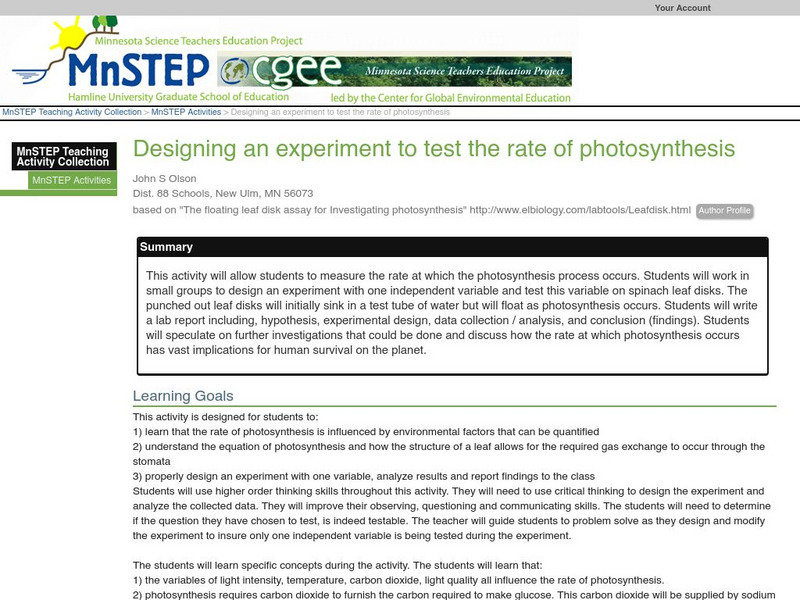Hi, what do you want to do?
Curated OER
Hibernating Hoopla
Students simulate hibernation with their stuffed animals. They predict the length of time of hibernation and type their math journal entries about sorting, graphing and draw pictures. They read bear hibernation stories.
Curated OER
Induction: Inquiry in Action
Students investigate the factors that affect the induced current in a loop of wire. They discuss Faraday's Law and Lenz's Law. Students identify the different variables that affect the magnetic flux and calculate the magnetic flux...
Curated OER
Testing Soils for Garden Planting
Sixth graders collect soil samples and record the location of the samples by using GPS.
Curated OER
Polar Bear Cubs and ME
Learners visit the following web site to find out the birth weights and lengths of polar bear cubs- Ask Jeeves for Kids. They then enter the information found at this site relating to the birth length and weight of polar bear cubs into a...
Curated OER
Oxygen: What a Gas!
Eighth graders explain how oxygen reacts to other elements. They also explain why oxygen is a reactive substance, how it has weight, and how it reacts with other substances. They construct an experiment to relate their findings.
Curated OER
Acids and Bases - Vinegar II
Eighth graders experiment what happens when acids and bases are mixed together. In this acids and bases experimental lesson plan, 8th graders decide which of three solutions of unknown pH will neutralize a fourth solution of unknown pH....
Curated OER
Introduction to Graphical Representation of Data Sets in Connection with Nuclear Decay
Young scholars record data, make observations, and share in experimentation and discussion of numerical experiments.
Curated OER
Efficiency
Fourth graders work cooperatively to investigate the efficiency of various household appliances. They share their findings in three to five minute oral presentations.
Curated OER
Traffic Watch with a Palm
Students, in groups, interpret data about traffic using Palm technology.
Curated OER
Sediment Tubes
Students observe how different density soils and rocks behave in wind and in water. They make predictions and careful observations as they explore sediment transport and sediment rates in streams and rivers.
Curated OER
Where's Up?
Fifth graders brainstorm answers to the question why compasses point north. In groups, they use introduce the needle to the different ends of the magnet. They place the needles in a styroform disk and record their results in their...
Curated OER
A Pocketful of Change
Students study the meaning, symbolism, and value of U.S. coins,
especially the quarter. They conduct a survey of coins in students'
possession, graphing the results to show frequency distribution and drawing
inferences about the U.S....
Curated OER
Forces Applied to an Object
Fourth graders predict, observe, and compare what happens when a force is applied to an object. In this forces lesson plan, 4th graders complete a 'swinging hammer' activity to learn about forces and motion.
Science Education Resource Center at Carleton College
Serc: Designing an Experiment to Test the Rate of Photosynthesis
Using spinach leaf disks, students measure the rate at which the photosynthesis process occurs. Students speculate on further investigations that could be done and discuss how the rate at which photosynthesis occurs has vast implications...
McREL International
Mc Rel: Glue Polymer (Whelmer #15 Learning Activity)
An easy to do activity that investigates the basic principles behind chemical bonding. The activity is written in lesson plan format that meets NSES standards.
McREL International
Mc Rel: Whelmer #64 Learning Activity: Liquid Rainbow
An easy to do activity that investigates density and solubility. The activity is presented in lesson plan format that meets NSES standards.



















